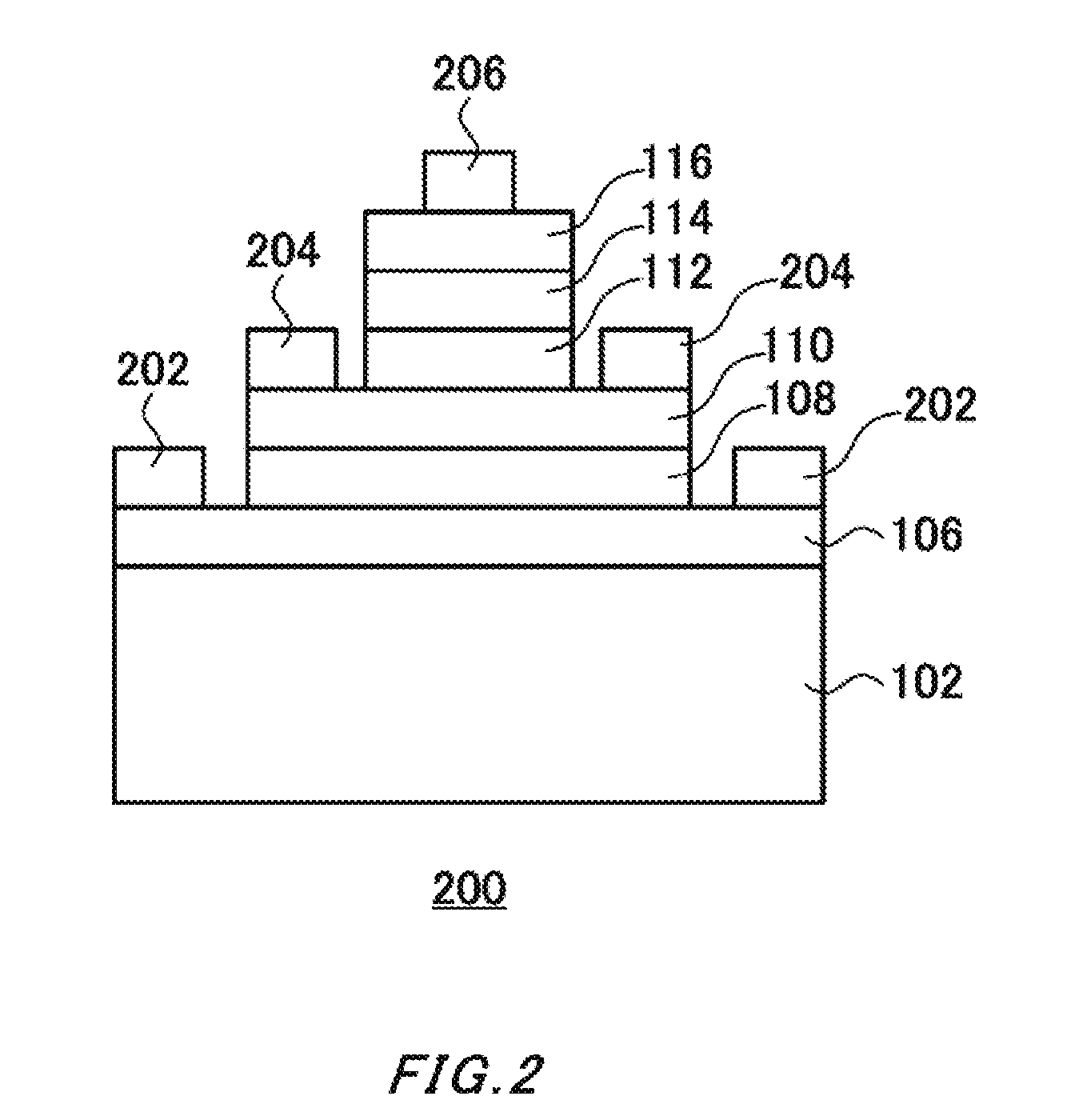Semiconductor wafer, method of producing semiconductor wafer, and heterojunction bipolar transistor
- Summary
- Abstract
- Description
- Claims
- Application Information
AI Technical Summary
Benefits of technology
Problems solved by technology
Method used
Image
Examples
working example
[0049](Working Example)
[0050]A semiconductor wafer of a working example was manufactured by sequentially stacking, on a semi-insulative GaAs wafer (the support wafer 102), an n+-type GaAs layer to serve as the sub-collector (the first connection layer 106), an n-type GaAs layer to serve as the collector (the first semiconductor crystal layer 108), a p-type GaAs layer to serve as the base (the second semiconductor crystal layer 110), an n-type InGaP layer to serve as the emitter (the third semiconductor crystal layer 112), an n-type GaAs layer to serve as the sub-emitter (the second connection layer 114) and an n-type InGaAs layer to serve as the emitter contact (the fourth semiconductor crystal layer 116). The n-type InGaP layer to serve as the emitter (the third semiconductor crystal layer 112) had a larger band gap than the p-type GaAs layer to serve as the base (the second semiconductor crystal layer 110). The n-type InGaAs layer to serve as the emitter contact (the fourth semico...
PUM
 Login to View More
Login to View More Abstract
Description
Claims
Application Information
 Login to View More
Login to View More - R&D
- Intellectual Property
- Life Sciences
- Materials
- Tech Scout
- Unparalleled Data Quality
- Higher Quality Content
- 60% Fewer Hallucinations
Browse by: Latest US Patents, China's latest patents, Technical Efficacy Thesaurus, Application Domain, Technology Topic, Popular Technical Reports.
© 2025 PatSnap. All rights reserved.Legal|Privacy policy|Modern Slavery Act Transparency Statement|Sitemap|About US| Contact US: help@patsnap.com



